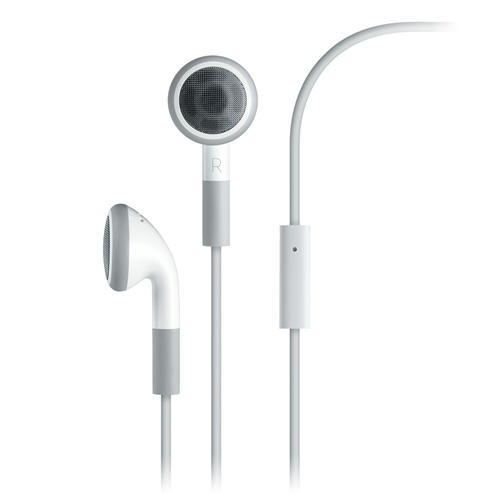SO you’re walking down the street and suddenly the music kicks in, you drop to the ground and pull your earphones out of your ears! “what just happened†you think, then you realise the un-pause on the mp3 has just kicked in and you forgot to turn it down. Well people this will be a problem of the past with these earphones, Now all I need them to do is make coffee. VERY IMPORTAN You can find the original article here What’s been your favorite set this weekend? Or the best new track you’ve shared with all of your friends? Well take that track and imagine listening to it in exactly the way your ears want you to.
Meet theÂ
Even earphones, who tune themselves to each person’s particular hearing. At just under $100, they customize the sounds they play to suit your own audio needs. They use their own EarPrint technology that measures how you hear different frequencies, then sets the earphones to play back sound specifically for each ear. As a result, the headphones give you a profile tuned to your own ear (each ear with its own profile).
One of the biggest things that originally drew me to the earphones was the fact that they are not a pre-order campaign â€" they have physical earbuds available now. The company, who launched in in June, has sold out batches twice thus far and are continuing to take orders on their website. Luckily, I was able to get my hands on a pair to try out as well.

I’m pretty picky about the gadgets I use for audio, as I’m constantly listening to music â€" digging for new sets on Soundcloud, reviewing new tracks, jamming out in my own world. Being able to plug in and listen to my own music is what allows me to focus and, as a result, I’m very specific about the type of earphones or headphones I use. That being said, I was overly ecstatic when I was handed a pair of Even earphones to try out.
First, their appearance: the cords are a high-quality string that have a smooth look and feel. The buds look sleek, with a simple black-and-white color scheme â€" one black, one white, with the EarPrint device hanging at the middle of the cord, meant to dangle at your chest. They don’t tangle easily, which makes them easier to carry without having to worry about dealing with knots. They’re the type of earphones I wouldn’t mind wearing out in public.
Next: the sound test. This is where we meet “Sarah,†the soothing female voice that guides you through a number of sounds to test where your hearing level is at. This test was very straightforward â€" Sarah literally starts by saying “Hi, this is really easy†â€" and felt very conversational as she talked you through each noise. Five pieces of music are played for each ear, and you’re required to hit the button once you hear the sound. Though the process takes a little bit longer than I’d like, it’s seamless.
Overall quality of the listening experience was great. I switched between my Bose over-ear headphones and the Even earphones to test the difference in sound quality and worked to try a few subgenres of electronic music to see how each would sound between both pairs. I started off by listening toÂ
Louis The Child’s set from Lollapalooza this year and instantly found that the vocals were much more emphasized than in my Bose headphones. Next, I moved on toÂ
Mikey Lion’s live set from Desert Hearts 2016 andÂ
loved the emphasis on the bass I was hearing â€" the Even earphones made it much more of an all-around experience. I then switched over to Troyboi’s tracksÂ
Do You? andÂ
O.G. to continue to test this bass theory and, again, Even delivered.
As my hearing is likely damaged based on the amount of festivals and shows I’ve attended over my lifetime, it was much appreciated that the earphones were able to pick up on the frequencies I have more trouble hearing to create the full experience tracks deserve. Interestingly enough, every time I switched back to my Bose headphones to compare, I had to turn the volume down because it came at full blast and was overwhelming â€" and, when I did, the clarity between vocals and bass was lost. All in all, these babies pack a punch with their sound quality when it comes to electronic music.
It’s refreshing that these earphones don’t require using an app, since that seems so commonplace nowadays. All of the information that goes into your profile is saved in the little box hanging onto the string, so you can plug them into any device â€" phone, laptop, iPod, whatever you want â€" and still have your own profile saved. I found this extremely helpful, as it meant that I don’t have to re-adjust my volume based on what device I’m using. Beyond that, it’s a refreshing change from listening to sets with friends and having to change the volume based on everyone’s sensitivities. It makes listening much simpler and, quite frankly, electronic music better. How could you say no to a custom-made, surround-sound system in your own ears?
To get you started, here a few sets, old and new, you may enjoy listening to in the earphones (ok, to be fair, these are sets thatÂ
IÂ would want to hear in them):






